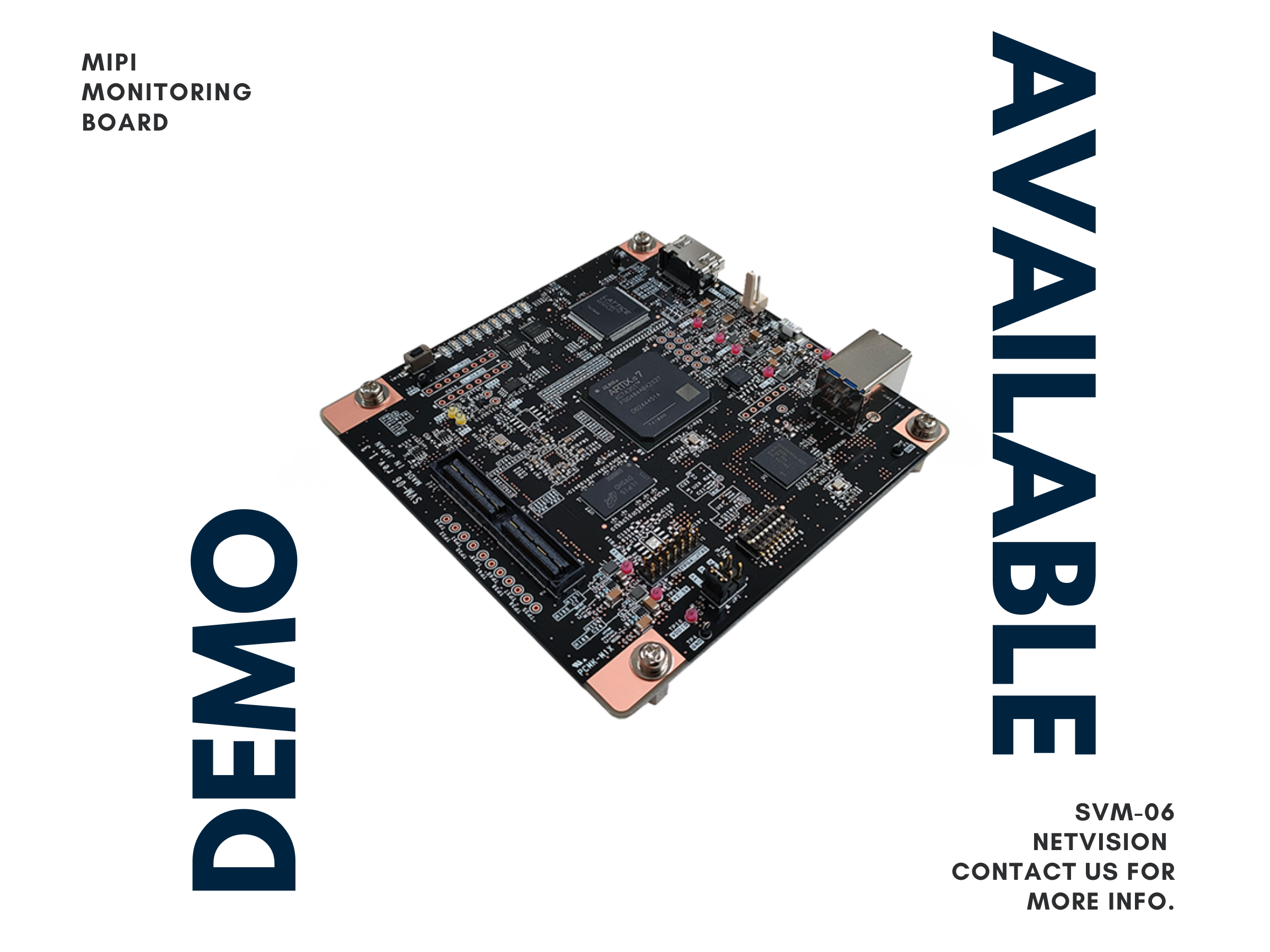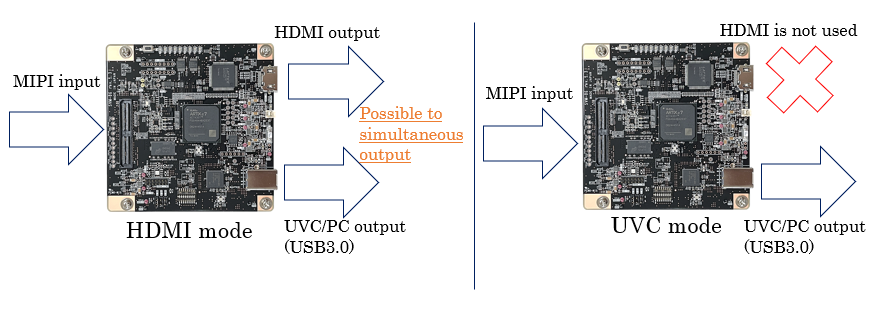This website uses cookies so that we can provide you with the best user experience possible. Cookie information is stored in your browser and performs functions such as recognising you when you return to our website and helping our team to understand which sections of the website you find most interesting and useful.

ITEMLIST
Products Infomation

MIPI CSI-2 | USB3.0 | HDMI | Up to 6.0Gbps | In-Vehicle Camera Testing

📌Request a Quote
The SVM-06 is a real-time monitoring board for MIPI CSI-2 signals, designed for automotive camera evaluation and CMOS sensor testing.
It outputs to HDMI and USB3.0 (UVC) simultaneously, supporting up to 4K resolution for debugging, validation, and ECU integration.
👉 Ideal for ADAS module QA, automotive vision system R&D, and sensor evaluation.
Features
・ High-Speed MIPI CSI-2 up to 1.5 Gbps per lane
・ Simultaneous HDMI + USB3.0 (UVC) Output
・ Supports 4K Video for real-time evaluation
・ Dual FPGA architecture (Xilinx Artix7 + Lattice CrossLink)
・ Compatible with Automotive SerDes: FPD-Link III, GMSL, GVIF2
・ Multi-boot function: dual sensor input, synchronized multi-board capture
・ Linux & Windows supported

Use cases
⭕ ADAS Module QA – Verify and monitor camera outputs before ECU integration
⭕ Automotive Camera Debugging – Real-time HDMI monitoring during R&D
⭕ CMOS Sensor Evaluation – Capture and analyze high-resolution test signals
⭕ Image Signal Validation – Ensure data integrity across MIPI → HDMI/UVC pipelines
⭕ ECU Development Support – Simplify image input debugging with FPGA-based tools
Video
Specifications
| Table Item | Specification | Remarks | |
|---|---|---|---|
| Video input interface | MIPI CSI-2 video signal | Supports FPD-LinkIII, GMSL, GVIF2 as deserializer | |
| Video output interface | USB3.0 (Windows, Linux, UVC Driver) HDMI (720P-60 fps / 1080P-60 or 30 fps / 4K-30 fps) |
Special HDMI monitors are available individually | |
| Input resolution | Up to 8190×4095 pixel | In the case of 1920×1080, about 140 fps In the case of 1280×720, about 300 fps |
|
| Output bit rate | (UVC mode) within 3.0 Gbps (HDMI mode) within 7.2 Gbps |
In the case of 1920×1080 (UVC mode) about 80 fps In the case of 1920×1080 (HDMI mode) about 60 fps |
|
| Supported sync signal | Frame Start, Frame End | ー | |
| Number of supported data lanes | 1 ~ 4 lanes | ー | |
| Data rate per lane | 20 ~ 1500 Mbps | ー | |
| Clock rate | 10 ~ 750 MHz | ー | |
| Supported pixel formats | YUV422 8bit / RGB24 / Raw8, 10, 12, 16, 20 |
ー | |
| Other interfaces | I2C | Frequency:100 / 200 / 400 kHz | Voltage level follows VDDL |
| GPIO | 16bit, IN/OUT direction control for each bit, Direct connection to FPGA |
Voltage level follows VDDL | |
| Power supply | Board power (input) | USB bus power / Dedicated 2pin connector (5V) |
ー |
| Target side power (output) | VDDIO = 1.8 or 2.5 or 3.3 V / 3.3 & 1.2 V output available | VDDIO:IO power supply setting | |
| Other functions | Test pattern output function, Image clipping function, Virtual Channel and Embedded Line are available individually |
ROM startup: Function to automatically transmit SerDes setting file (I2C) Support for ContinousClock and NonContinousClock |
|
| Interface connector | 120 pin (QSH-060-01-L-D-A) | connectable to a board with 60-pin connector | |
| FPGA | Artix-7 (XC7A35T) + CrossLink (LIF-MD6000) |
ー | |
| Frame memory | 256 MByte (DDR3-SDRAM) | ー | |
| USB3.0 chip | Cypress EZ-USB FX3 | ー | |
| HDMI chip | Sil1136 | ー | |
| Dimensions | length x width x height = 101.6 x 101.6 x 25.7 (mm) |
Including spacer (10mm) in height | |
| Attached
software Windows |
Video display software | NVCap | ー |
| I2C control software | SVMCtl | Including SV board update application | |
| Supported SerDes boards of our company | DS90UB954, MAX9288, CXD4960 etc., | ー | |



